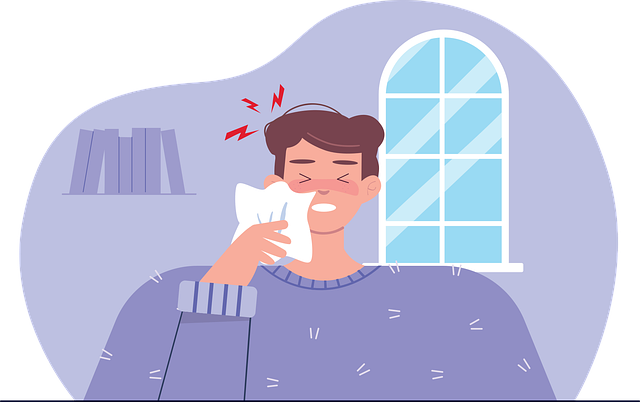
During the change of seasons, dry weather and low temperatures cause more people to catch colds or bronchitis, so you can often hear coughs around you. Cough is a natural immune response to expel viruses or foreign substances from your body. However, if your cough is not too severe or improves for a long time, your bronchial tubes will be further stimulated, which may cause acute inflammation of your bronchial tubes, respiratory diseases, and phlegm.
In particular, the amount of sputum increases significantly, and on average, healthy people secrete about 10-20 cc of sputum per day, but most of them evaporate when they swallow or breathe unconsciously. However, when you catch a severe cough or respiratory disease, the secretion of sputum increases to more than 50 cc. In winter, we look for foods that help relieve phlegm and cough.

It's a combination of cough and phlegm, radish and honey
As the temperature goes down, taste and nutrients become abundant, and since ancient times, radish, called wild ginseng (冬參), contains a component called Sinigrin, which is good for bronchial tubes. It is one of the glycosides containing sulfur, which also causes the spicy taste of radishes. Sinigrin has the effect of strengthening the function of the bronchial mucosa, which alleviates cough symptoms and promotes the secretion of saliva, making phlegm watery.
Honey, which is known to be rich in nutrients such as vitamins and minerals, is also very helpful in preventing coughs and colds in winter. Honey has been used as a folk remedy to relieve colds and coughs, and scientifically proven that the dextromethorphan component in honey has the effect of suppressing cough and relieving bronchial inflammation.
In addition, according to a study by researchers at the University of Oxford in the U.K. released in 2020, honey is more effective in relieving cold and flu symptoms than general drugs, and is safer for antibiotic resistance problems. The researchers surveyed 1,761 participants on how much honey intake affects the relief of cough symptoms in cold patients. As a result, they found that patients who ate honey had faster symptom relief than those who took Diphenhydramine, an antihistamine that is commonly used as a treatment for colds. The researchers analyzed, "The antibacterial ingredients of honey help relieve cold and cough symptoms."
Therefore, the combination of radish and honey can be said to be a special medicine for relieving cough and phlegm. In the past, adults made and ate radish honey syrup in winter to prevent coughing cold, which is very effective in detoxifying and relieving indigestion and hangovers. Pregnant women can also eat it without burden, and it is appropriate to take 1 teaspoon each time about three times a day. Gil Ju-yeon, a nutritionist at Hayak Nutrition Counseling, also recommended radish honey as a good food for relieving cough. However, because honey contains botulinum bacteria, it is not recommended for infants and young children.
How to make radish honey soup
1. Wash the radishes cleanly and slice them with the skin.
2. Place the radishes in a hot sterilized container and pour honey into it so that it is submerged in radish.
3. After covering the lid, you can age it in the refrigerator for about a week and drink the juice.

the efficacy of balloon flower
Bellflower root has historically been used as an antitussive agent because it promotes the secretion of bronchial hormones to relieve cough and phlegm. In addition, it is effective for various respiratory diseases such as colds, acute bronchitis, pneumonia, and asthma.
The saponin component of balloon flower plays a role in making the mucous membrane that keeps the bronchial tubes moist. This mucous membrane protects the bronchial tubes from various pathogens flowing from the outside. It also promotes the secretion of mucus in the respiratory tract, drains the phlegm, relieves inflammatory symptoms, and prevents swelling of the throat. According to the Rural Development Administration's own study, if balloon flower is washed well and heated at 60 degrees Celsius for two hours, the content of sandpaper will increase eight times.
The anthoxanthin component of balloon flower also helps prevent coughing and helps keep lungs and bronchial tubes healthy. Anthoxanthin is an ingredient contained in a rich variety of white fruits and vegetables called white food. It has the effect of suppressing the oxidative effect in the body and discharging harmful substances accumulated in the body to the outside, thereby enhancing the resistance of external bacteria and viruses, and enhancing immunity. In addition, it has the effect of reducing bad cholesterol present in the blood and keeping blood pressure safe, helping to prevent arteriosclerosis and heart disease.
In the case of balloon flower, since the shell contains most of the nutrients such as saponin, it is recommended to wash it thoroughly under running water without peeling it and cook it. When choosing a balloon flower, you should choose one that has many fine roots, has no defects on the surface, and is hard. If it is a trimmed balloon flower, it is good to have a soft, strong white color.
People with weak lungs or bronchial tubes are advised to eat bellflower root and licorice together. Put bellflower root and licorice in a 4:1 ratio, call them strong, boil them, reduce them to medium heat, and heat them until the water is reduced to half.
'healthy life' 카테고리의 다른 글
| You need to start treating heel pain quickly (0) | 2024.04.29 |
|---|---|
| 5 Foods to Reduce Inflammation in Your Body (0) | 2024.04.24 |
| Risk of Metabolic Syndrome and Proper Management (0) | 2024.04.15 |
| Food coma can also be an early symptom of diabetes. (0) | 2024.04.12 |
| What is a good way to manage diabetes to lower insulin resistance levels? (0) | 2024.04.10 |



